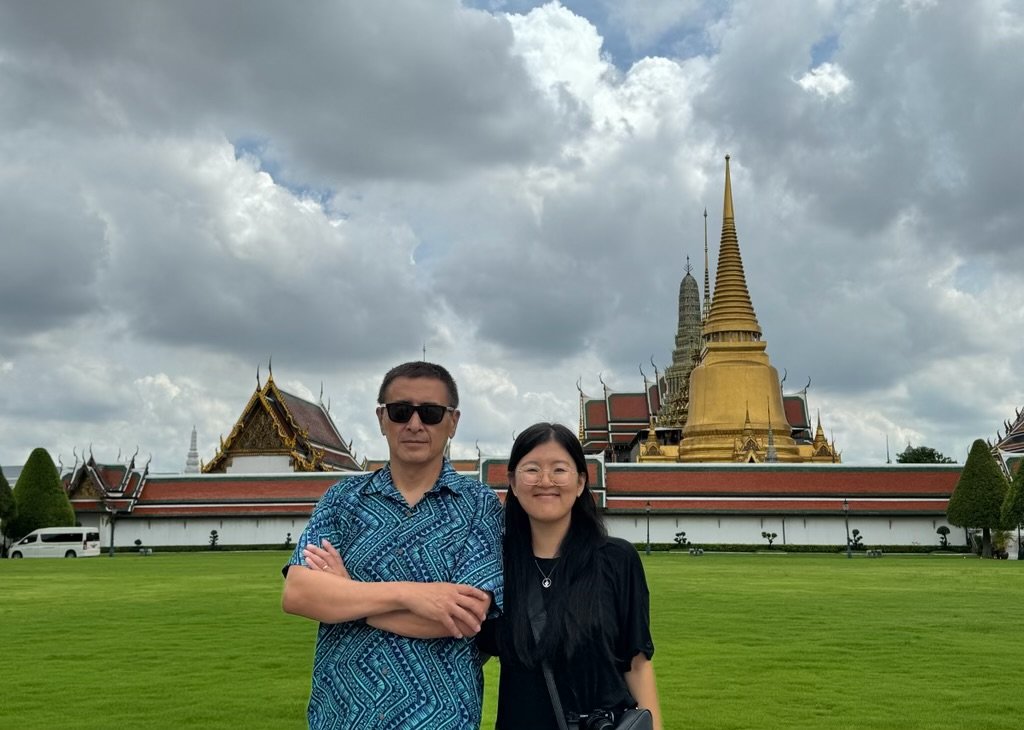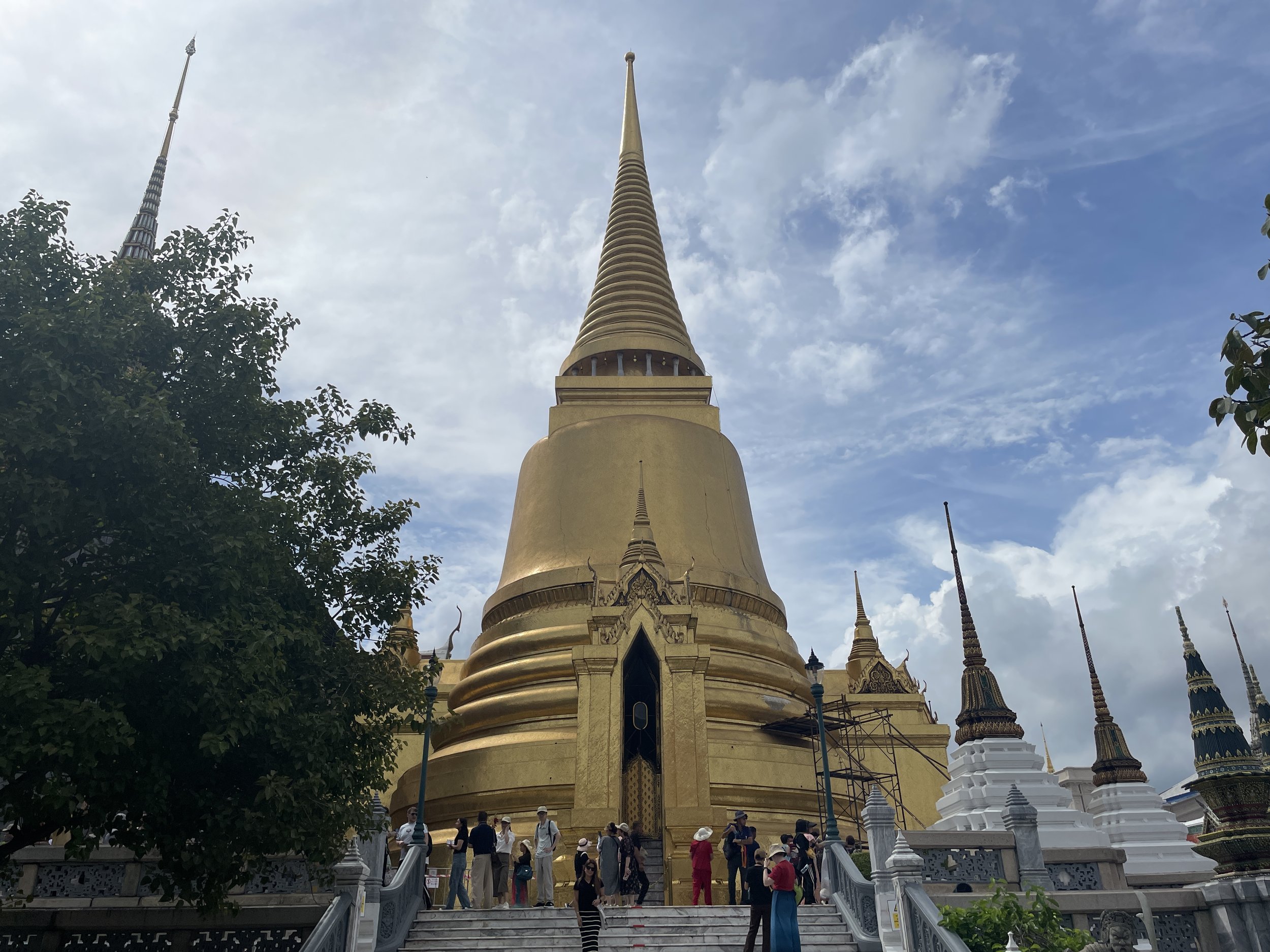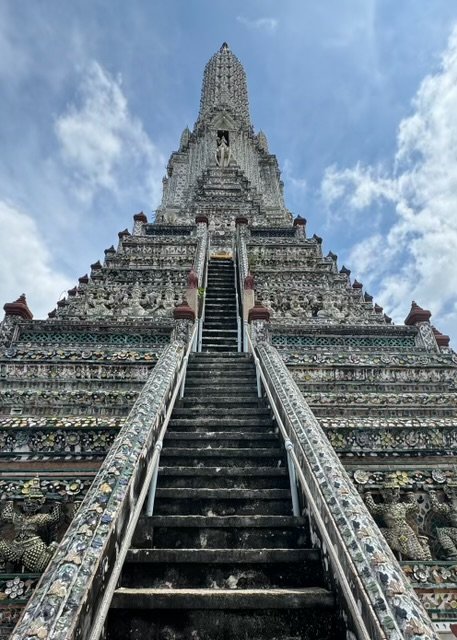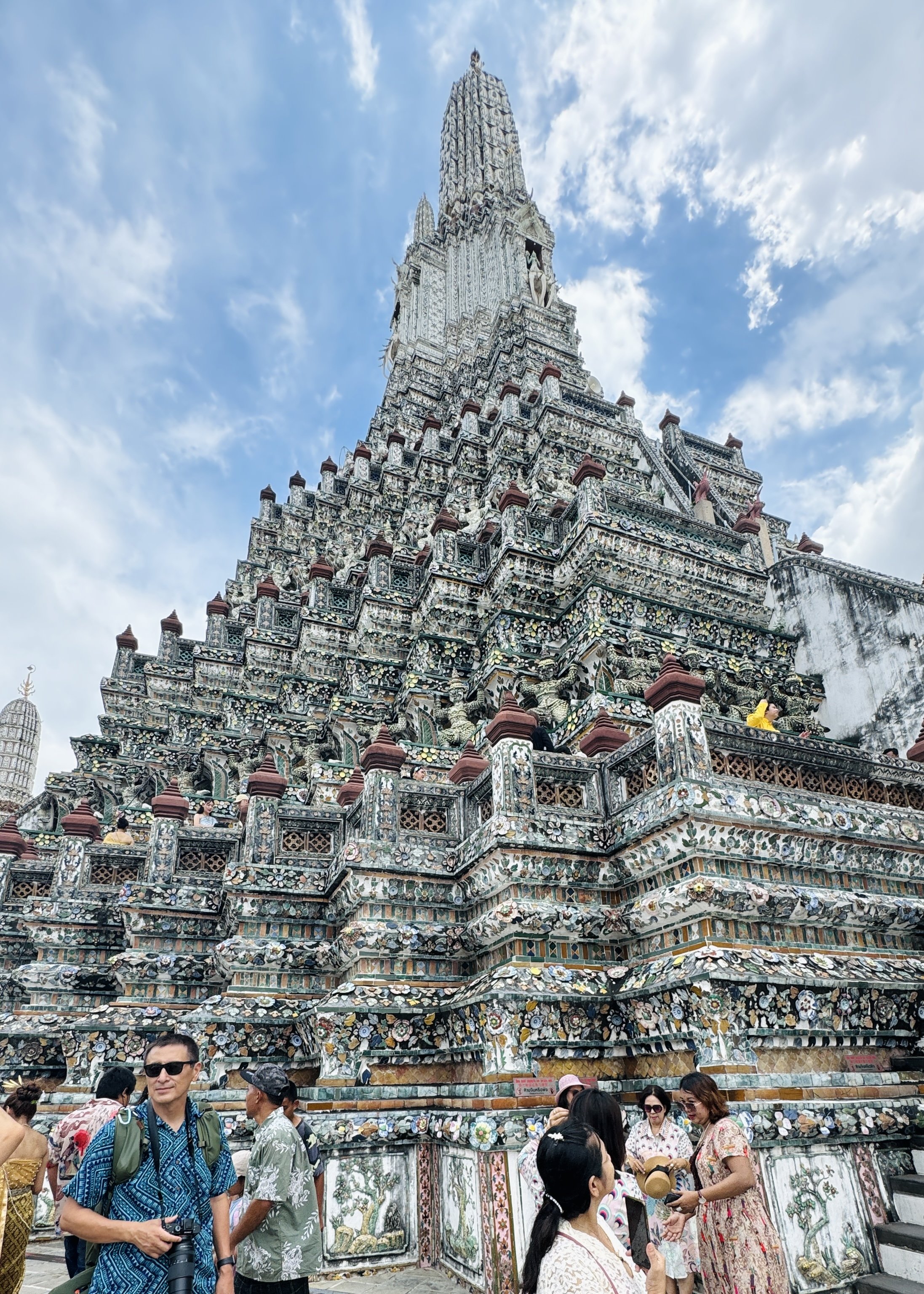The Grand Palace & Wat Arun 大皇宫和黎明寺
October 20, 2024
The Grand Palace is an absolute must-visit when in Bangkok. Although it once served as the official royal residence, the current king no longer lives or works there. Still, the palace remains one of Thailand’s most iconic landmarks, with its vibrant colors, intricate designs, and gold accents. We were awestruck by the overwhelming beauty of the detailed buildings, lush gardens, and numerous temples, all within a relatively compact space. The design clearly wasn’t intended for comfort but to showcase the power and grandeur of the Thai monarchy.
The Temple of the Emerald Buddha within the palace complex is particularly famous. The Buddha statue, carved from a single piece of jade, is revered as Thailand’s most sacred image. Each season, the king personally changes the robes of the Buddha, a gesture that symbolizes the changing of the seasons. Photography is not allowed inside the temple, but we were able to use our long-lens camera to capture the majesty of the Buddha from the outside.
After visiting the Grand Palace, we hopped on a city ferry to cross the bustling Chao Phraya River on our way to Wat Arun, also known as the Temple of Dawn. While it may not be as grand or ornate as the Grand Palace, it has its own unique charm. The architecture here is less colorful but still striking, with its towering central prang decorated with intricate porcelain tiles. The atmosphere was more laid-back compared to the grandeur of the palace, and we noticed many young visitors taking photos in traditional Thai costumes, adding a lively, modern touch to the ancient site.
After crossing back over the river, we stopped at a small Thai café on a street corner, which was popular with tourists. The dishes were simple, yet the food was delicious and satisfying.
Our adventure continued to the Wat Po.
Next we visited the Chatuchak Weekend Market, one of the largest markets in Bangkok. With over 15,000 stalls, it’s a sprawling maze of shops selling everything from street food to clothing, art, and crafts. The clothing styles were trendy and the prices were reasonable, making it a great place to shop for unique items and souvenirs. Chenggang had his first of many mango sticky rices.
For dinner, we headed to Asiatique Riverfront, a lively night market and dining area by the river. The food was decent, and the view of the river, combined with the vibrant atmosphere, made it a nice place to relax after a busy day.
大皇宫和黎明寺
2024年10月20日
大皇宫是曼谷必去的景点之一。虽然它曾经是泰国国王的正式皇宫,但现任国王已不再居住或办公于此。然而,大皇宫依然是泰国最具代表性的地标之一,以其艳丽的色彩、精美的设计和金碧辉煌的装饰而闻名。我们被建筑的精致细节、郁郁葱葱的花园和众多寺庙所深深震撼。虽然大皇宫的设计显然不是为了舒适而建,但却完美展现了泰国皇室的威严与辉煌。
宫殿内的玉佛寺尤为著名。寺中供奉的玉佛像由一整块翡翠雕刻而成,是泰国最神圣的佛像之一。每逢季节更替,国王会亲自为玉佛更换袈裟,这一仪式象征着季节的交替。虽然寺内禁止拍照,但我们利用长焦镜头从外部捕捉到了玉佛的庄严之美。
参观完大皇宫后,我们搭乘城市渡轮穿越熙熙攘攘的湄南河,前往对岸的黎明寺(Wat Arun)。虽然黎明寺没有大皇宫那样金碧辉煌,但它有自己独特的魅力。寺内的建筑色彩相对朴素,但高耸的中央佛塔装饰着精美的瓷片,显得格外引人注目。相比大皇宫的壮丽,黎明寺的氛围更加悠闲,我们还看到许多年轻游客穿着传统泰国服饰拍照,为这座古老的寺庙增添了一份现代气息。
返回河对岸后,我们在街角的一家泰式小餐馆稍作停留。这家餐馆深受游客欢迎,虽然菜品简单,但味道鲜美,令人满意。
我们的旅程接着来到了卧佛寺(Wat Pho),随后前往曼谷最大的市场之一——乍都乍周末市场(Chatuchak Weekend Market)。这个市场拥有超过15,000个摊位,宛如一个巨大的迷宫,各种街头美食、服装、艺术品和手工艺品应有尽有。这里的服装时尚,价格合理,非常适合挑选独特的纪念品。成刚在这里第一次尝到了真正的芒果糯米饭,印象深刻。
晚餐时间,我们前往了湄南河边的Asiatique河滨夜市。这是一个热闹的夜市和餐饮区,尽管食物的味道中规中矩,但夜市热闹的氛围与河景相映成趣,为忙碌的一天画上了一个放松的句号。








































